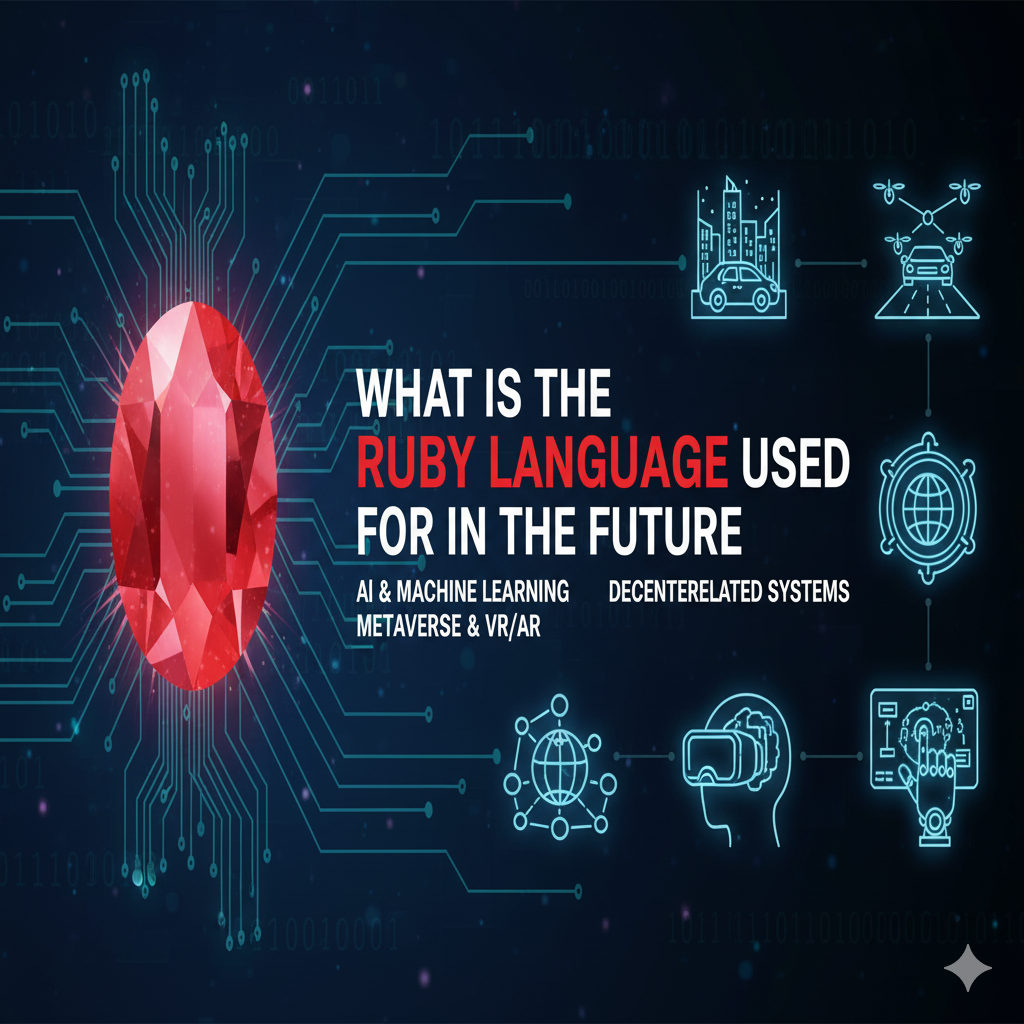When collaborating with a Top Ruby on Rails web development company, understanding what is the Ruby language used for in the future becomes essential for strategic tech decisions. In a landscape driven by AI-powered applications, cloud infrastructure, and automation, Ruby continues to evolve from its web-centric origins into a language driving smarter, faster, and more resilient digital ecosystems.
The Enduring Strength of Ruby in a Modern Tech Stack
The Ruby programming language was built with simplicity and productivity in mind. Its creator, Yukihiro “Matz” Matsumoto, envisioned a language that balances human readability with technical performance. Today, that philosophy still anchors Ruby’s value across development environments.
For a Ruby on Rails web development company, Ruby remains the foundation for building dynamic, database-driven web applications. However, as businesses adopt AI, microservices, and API-driven systems, Ruby is finding new relevance in these interconnected domains.
Core Uses of the Ruby Language Today
To understand what the Ruby language is used for in the future, we must examine where it excels today.
Web Development: Ruby’s flagship framework, Ruby on Rails, continues to dominate as one of the most developer-friendly environments for building scalable, secure, and fast web platforms.
Automation & Scripting: Ruby’s flexibility makes it ideal for automating workflows, managing deployments, and building custom scripts that save time across DevOps environments.
Prototyping & MVPs: Startups and enterprises use Ruby for rapid prototyping, enabling faster time-to-market without sacrificing maintainability.
API-Driven Systems: Ruby supports lightweight microservice architectures and RESTful API integrations, allowing seamless connectivity with other technologies.
Emerging Future Applications of the Ruby Language
1. AI Integration and Intelligent Automation
While Python leads in AI, Ruby’s ecosystem is evolving through libraries that simplify model integration and data interaction. Developers now use Ruby wrappers around TensorFlow and PyTorch APIs, allowing applications to embed machine learning capabilities into existing Rails systems.
AI-driven chatbots, predictive analytics dashboards, and automation tools built with Ruby on Rails demonstrate how the language can coexist with artificial intelligence workflows, bridging modern data science with proven backend stability.
2. Cloud-Native Web Architectures
Cloud computing continues to redefine deployment. Ruby’s future lies in its adaptability to serverless functions, containerized applications, and scalable microservices. Frameworks such as Hanami and Sinatra are lightweight options complementing Rails in distributed environments.
As businesses migrate workloads to AWS, Azure, and Google Cloud, the demand for Ruby experts who can design cost-optimized, cloud-native apps continues to rise.
3. Sustainable Development and Digital Efficiency
Sustainability in software now influences business decisions. Ruby’s expressive syntax and reduced code overhead lead to cleaner, maintainable codebases—resulting in lower compute energy and longer application lifecycles.
For enterprises, this means sustainable engineering practices that align with environmental goals and long-term product scalability—key considerations when choosing a Ruby on Rails web development company.
4. API-First and Headless Architectures
The digital ecosystem is increasingly API-driven. Ruby is adapting to headless CMS architectures and frontend-backend decoupling models. By pairing Ruby backends with frontend frameworks like React, Next.js, and Vue.js, developers can build dynamic and flexible applications suited for omnichannel experiences.
This fusion positions Ruby as a backend powerhouse for modern, modular, and composable digital platforms.
Why Businesses Still Invest in Ruby for the Future
Speed of Development
Ruby’s developer-friendly design and mature libraries accelerate product development cycles. Organizations prefer Ruby for building MVPs or scaling SaaS platforms without compromising on quality.
Community and Ecosystem Stability
Even after two decades, Ruby maintains an active open-source community, regularly updating its libraries (“gems”) for security, performance, and integration. This ecosystem ensures that Ruby remains future-proof for both startups and enterprises.
Scalability and Security
With frameworks like Rails 7 and Hanami 2.0, Ruby’s architecture is becoming increasingly scalable and secure. The language’s conventions enable teams to focus on business logic rather than repetitive configurations, ensuring cleaner and safer deployments.
The Strategic Edge: Choosing the Right Ruby Partner
Selecting a trusted Ruby on Rails web development company determines how effectively you can leverage Ruby’s potential. The right partner should:
Offer expertise in Ruby versioning, Rails upgrades, and code refactoring.
Implement DevOps and CI/CD pipelines using Ruby automation.
Integrate Ruby apps with AI and data-driven APIs.
Provide long-term maintenance and performance tuning.
With these competencies, businesses can transform Ruby from a coding language into a strategic growth asset.
The Future Outlook of the Ruby Language
As 2025 and beyond bring greater emphasis on automation, cloud agility, and sustainable software, Ruby’s role will shift from a traditional web tool to a multi-disciplinary enabler. It will continue empowering teams to build maintainable, human-centric applications that align technology with purpose.
Organizations that understand what the Ruby language is used for in the future—and partner with experienced Rails specialists—will remain agile, secure, and innovation-driven in an evolving digital economy.
Conclusion
The Ruby language stands at the crossroads of reliability and reinvention. While newer frameworks emerge, Ruby continues to deliver unmatched value in developer productivity, code readability, and system stability. When guided by an Experienced software development company, Ruby can help businesses embrace automation, scalability, and modern web architecture—all while remaining cost-effective and sustainable.
FAQs
1. What is the Ruby language used for in 2025 and beyond?
Ruby is used for web development, automation, APIs, cloud-native applications, and integrating AI features into scalable systems.
2. Why does Ruby remain relevant in modern web projects?
Ruby’s simplicity, stability, and mature ecosystem make it ideal for sustainable and scalable software solutions.
3. Can Ruby work with AI and machine learning tools?
Yes, through integrations and API wrappers, Ruby can connect to AI frameworks and serve as a reliable backend for intelligent systems.
4. Is Ruby still a good choice for startups?
Absolutely. Ruby’s rapid prototyping ability and developer efficiency make it one of the best languages for MVPs and SaaS startups.
5. How can I find the right Ruby on Rails web development company?
Look for teams with proven Ruby experience, Rails upgrade expertise, DevOps practices, and post-launch support.
